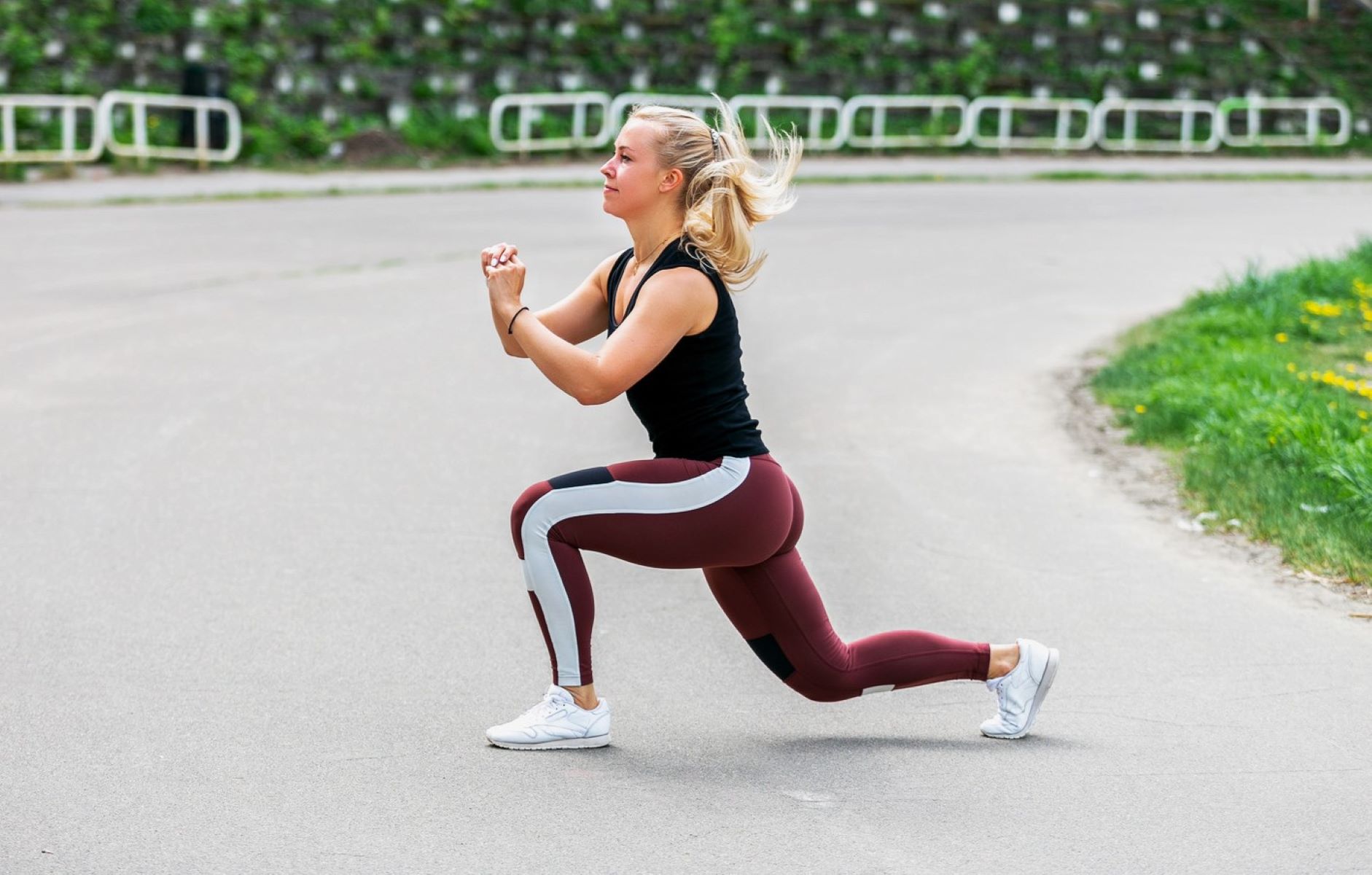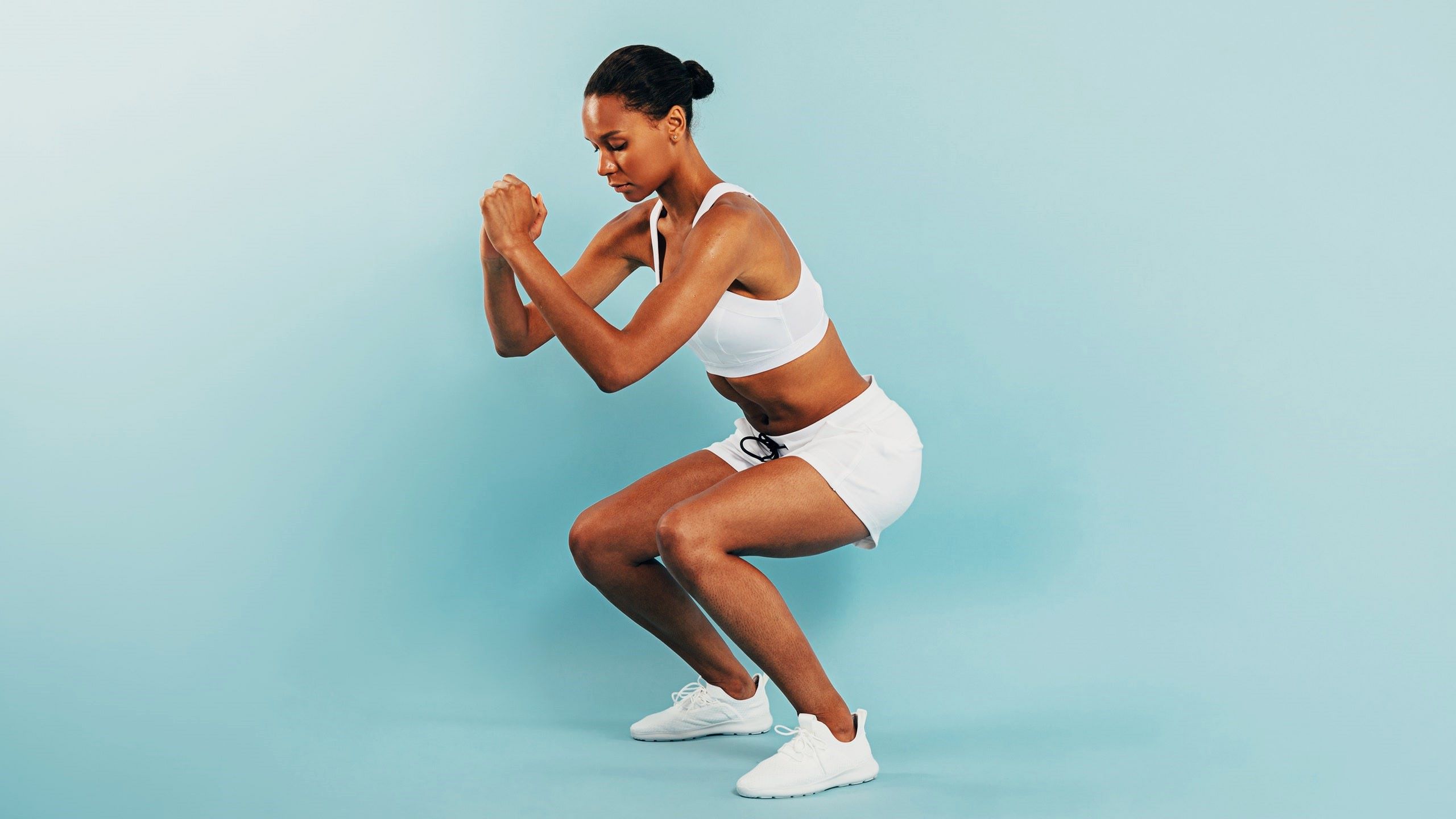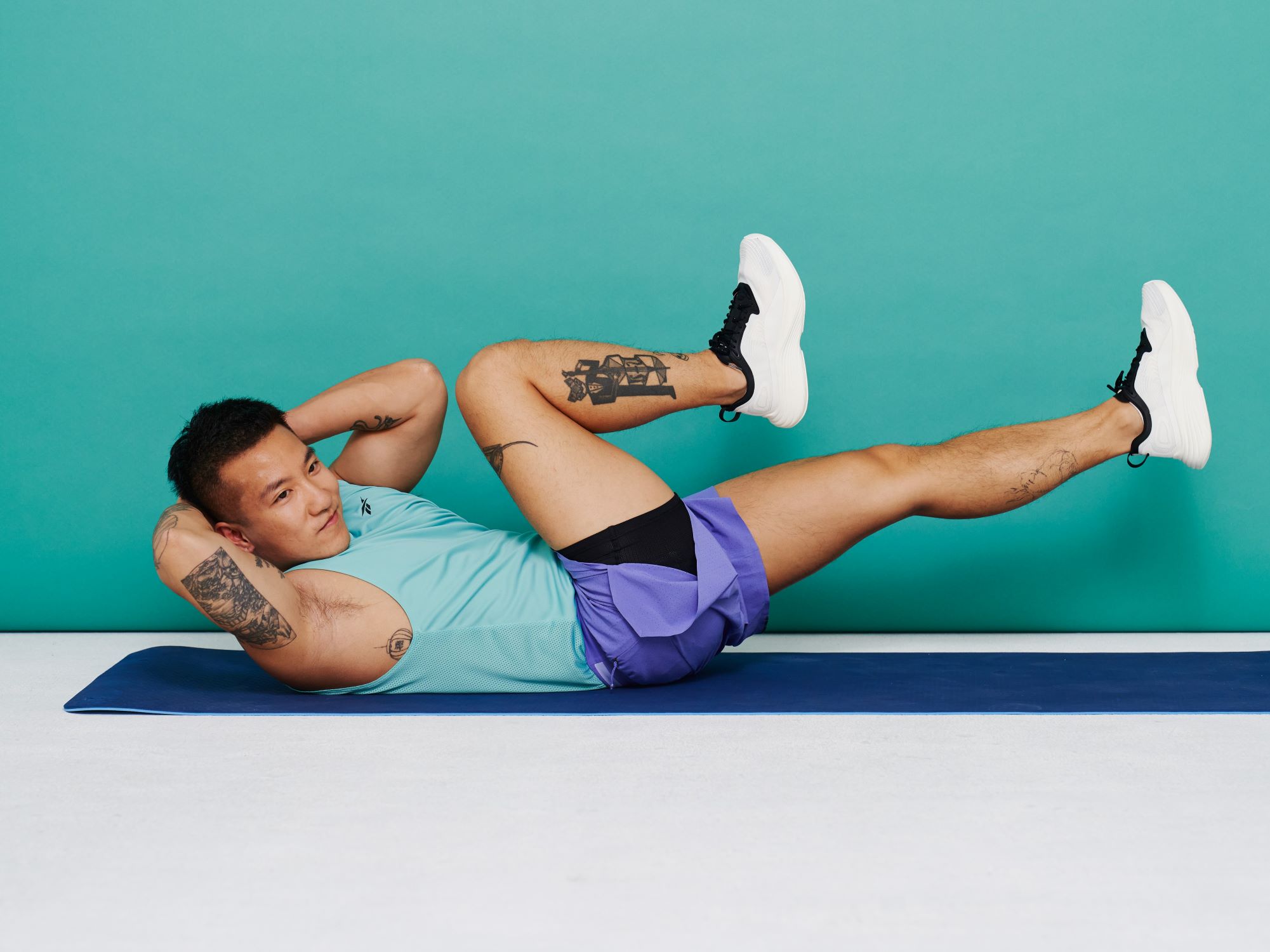Home>Training & Techniques>Mastering The Technique Of Jumping Lunges


Training & Techniques
Mastering The Technique Of Jumping Lunges
Published: March 5, 2024
Learn the best training and techniques for mastering the jumping lunges. Improve your form and maximize your workout with expert tips and guidance.
(Many of the links in this article redirect to a specific reviewed product. Your purchase of these products through affiliate links helps to generate commission for Therunningadvisor.com, at no extra cost. Learn more)
Table of Contents
Understanding the Benefits of Jumping Lunges
Jumping lunges are a dynamic and powerful exercise that offers a multitude of benefits for both the body and mind. This high-intensity plyometric movement engages various muscle groups and provides an effective cardiovascular workout. Here are the key benefits of incorporating jumping lunges into your fitness routine:
-
Enhanced Lower Body Strength: Jumping lunges target the quadriceps, hamstrings, glutes, and calves, helping to build strength and endurance in these major muscle groups. The explosive nature of the movement activates fast-twitch muscle fibers, contributing to improved lower body power and agility.
-
Improved Balance and Coordination: Performing jumping lunges requires coordination and balance, as it involves transitioning between split-leg positions while in mid-air. This helps to enhance proprioception and stability, which are essential for various athletic activities and everyday movements.
-
Cardiovascular Conditioning: The continuous and rapid nature of jumping lunges elevates the heart rate, making it an effective cardiovascular exercise. By incorporating this plyometric movement into your workout routine, you can improve cardiovascular endurance and overall stamina.
-
Calorie Burning and Fat Loss: Jumping lunges are a high-intensity exercise that can contribute to calorie burning and fat loss. The combination of strength training and cardiovascular conditioning makes it an efficient choice for individuals looking to manage their weight and improve body composition.
-
Functional Movement Patterns: The dynamic nature of jumping lunges mimics real-life movements, making it a functional exercise that translates to activities such as running, jumping, and sports-related motions. By strengthening these movement patterns, jumping lunges can enhance overall athleticism and physical performance.
-
Time-Efficient Workout: Incorporating jumping lunges into a workout routine can save time while delivering significant benefits. This compound exercise targets multiple muscle groups simultaneously, making it an efficient choice for individuals with busy schedules.
By understanding the diverse benefits of jumping lunges, individuals can make informed decisions about integrating this exercise into their fitness regimen. Whether aiming to enhance strength, improve cardiovascular health, or elevate athletic performance, jumping lunges offer a versatile and impactful workout option.
Read more: Mastering The Technique Of Mountain Climbers
Proper Form and Technique for Jumping Lunges
Mastering the proper form and technique for jumping lunges is essential to maximize the benefits of this dynamic exercise while minimizing the risk of injury. By adhering to correct form and technique, individuals can effectively engage the targeted muscle groups and optimize the functional aspects of the movement.
1. Starting Position:
Begin in a standing position with feet hip-width apart and arms relaxed at your sides. Engage the core muscles to maintain stability and balance throughout the exercise.
2. Lunge Position:
Take a large step forward with one leg, ensuring that the front knee is positioned directly above the ankle while maintaining a 90-degree angle. The back knee should be positioned just above the floor, creating a deep lunge position.
3. Explosive Jump:
From the lunge position, propel your body upward explosively by pushing off the front foot. As you ascend, switch the position of your legs in mid-air, bringing the back leg forward and the front leg back.
4. Landing:
Land softly and quietly on the balls of your feet, ensuring that both knees are bent to absorb the impact. The front knee should remain aligned with the ankle to prevent excessive strain on the joints.
5. Repeat:
Immediately transition into the next repetition by descending into another lunge position upon landing. Aim for a fluid and continuous motion, maintaining a controlled rhythm throughout the exercise.
Key Points to Remember:
- Keep the torso upright and avoid leaning forward excessively during the movement.
- Engage the glutes and quadriceps to power the explosive jump, focusing on generating upward momentum.
- Maintain a smooth and controlled transition between lunge positions to minimize the risk of injury.
Breathing Technique:
Coordinate your breathing with the movement by inhaling during the initial lunge descent and exhaling forcefully as you propel upward into the jump. Consistent and rhythmic breathing can enhance overall performance and endurance during jumping lunges.
Common Mistakes to Avoid:
- Allowing the front knee to extend beyond the toes during the lunge position, which can strain the knee joint.
- Failing to maintain proper alignment of the lower body, leading to instability and potential injury.
- Neglecting to engage the core muscles, which can compromise stability and balance during the exercise.
By mastering the proper form and technique for jumping lunges, individuals can optimize the effectiveness of this plyometric exercise while minimizing the risk of strain or injury. Consistent practice and attention to detail can lead to improved strength, agility, and overall athletic performance.
Common Mistakes to Avoid When Performing Jumping Lunges
When performing jumping lunges, it is crucial to be mindful of common mistakes that can compromise the effectiveness of the exercise and increase the risk of injury. By recognizing and addressing these mistakes, individuals can refine their technique and experience the full benefits of this dynamic plyometric movement.
-
Allowing the Front Knee to Extend Beyond the Toes:
Allowing the front knee to extend beyond the toes during the lunge position can place excessive strain on the knee joint. This misalignment not only compromises the stability of the movement but also increases the risk of knee discomfort or injury. To avoid this mistake, focus on taking a large enough step forward during the lunge so that the front knee remains directly above the ankle, forming a 90-degree angle. This alignment helps distribute the workload evenly across the lower body muscles and minimizes unnecessary stress on the knees. -
Failing to Maintain Proper Alignment of the Lower Body:
Maintaining proper alignment of the lower body is essential for stability and injury prevention during jumping lunges. Common mistakes include allowing the knees to collapse inward or outward during the movement, which can lead to instability and potential strain on the hip and knee joints. To address this, individuals should consciously engage the hip abductors and external rotators to keep the knees in line with the toes throughout the exercise. This alignment promotes optimal biomechanics and reduces the risk of imbalances or discomfort. -
Neglecting to Engage the Core Muscles:
Neglecting to engage the core muscles during jumping lunges can compromise stability and balance, diminishing the effectiveness of the exercise. A common mistake is allowing the torso to lean forward excessively, placing undue stress on the lower back and reducing the engagement of the glutes and quadriceps. To rectify this, individuals should focus on maintaining an upright torso position by activating the core muscles to stabilize the spine. This not only enhances the efficiency of the movement but also reduces the risk of strain or discomfort in the lower back region.
By being mindful of these common mistakes and actively working to correct them, individuals can refine their technique and optimize the benefits of jumping lunges. Consistent attention to proper form and alignment can lead to improved lower body strength, enhanced stability, and reduced risk of injury, ultimately contributing to a more effective and rewarding workout experience.
Incorporating Jumping Lunges into Your Workout Routine
Incorporating jumping lunges into your workout routine can significantly elevate the intensity and effectiveness of your training regimen. Whether you are a seasoned athlete or a fitness enthusiast looking to enhance your lower body strength and cardiovascular endurance, integrating jumping lunges can bring a dynamic and impactful element to your workouts.
1. Warm-Up and Activation
Before incorporating jumping lunges into your workout, it is essential to engage in a thorough warm-up to prepare your muscles and joints for the demands of this high-intensity exercise. Dynamic movements such as leg swings, hip rotations, and bodyweight squats can help activate the lower body muscles and improve flexibility. Additionally, incorporating a brief cardio warm-up, such as jogging or cycling, can elevate your heart rate and prime your body for the upcoming workout.
2. Integration into Circuit Training
Jumping lunges can be seamlessly integrated into circuit training routines to add a plyometric and strength-building component. Design a circuit that includes exercises targeting different muscle groups, and strategically place jumping lunges within the sequence to capitalize on their dynamic nature. For example, a circuit may include bodyweight squats, push-ups, planks, and jumping lunges, creating a well-rounded and challenging full-body workout.
3. Interval Training
Incorporating jumping lunges into interval training sessions can elevate the cardiovascular intensity of your workouts. By alternating between periods of high-intensity jumping lunges and active recovery exercises, such as walking or light jogging, you can create a challenging and effective interval workout. This approach not only enhances cardiovascular conditioning but also promotes calorie burning and fat loss.
4. Superset with Strength Training
Pairing jumping lunges with traditional strength training exercises can create a powerful superset that targets the lower body muscles from different angles. For instance, performing a set of barbell squats followed by a set of jumping lunges can provide a comprehensive lower body workout, effectively engaging both slow-twitch and fast-twitch muscle fibers. This approach can lead to improved muscular endurance and overall lower body strength.
5. Standalone Plyometric Workout
Dedicating a portion of your workout routine specifically to plyometric exercises, including jumping lunges, can enhance explosive power and agility. By focusing on plyometric movements, you can improve the recruitment of fast-twitch muscle fibers, which are essential for activities such as sprinting, jumping, and rapid directional changes. This targeted approach can contribute to enhanced athletic performance and functional movement patterns.
Incorporating jumping lunges into your workout routine offers a versatile and effective way to challenge your lower body muscles, elevate your cardiovascular fitness, and enhance your overall athleticism. By strategically integrating this dynamic exercise into various training modalities, you can experience a well-rounded and impactful workout regimen that promotes strength, endurance, and functional movement capabilities.
Read more: The Importance Of Jump Squats For Runners
Advanced Variations and Modifications for Jumping Lunges
As individuals progress in their fitness journey, exploring advanced variations and modifications for jumping lunges can provide new challenges and opportunities for continued growth. These advanced techniques not only add diversity to workout routines but also target specific muscle groups with varying intensities, contributing to comprehensive lower body development and enhanced athletic performance.
1. Weighted Jumping Lunges
Incorporating weights, such as dumbbells or a weighted vest, into jumping lunges can significantly increase the resistance and intensity of the exercise. Holding weights while performing jumping lunges challenges the lower body muscles to a greater extent, promoting strength and power development. This variation is particularly beneficial for individuals seeking to advance their lower body strength and explosiveness.
2. Depth Jumping Lunges
Depth jumping lunges involve performing jumping lunges from an elevated platform or box, adding an element of depth and explosiveness to the movement. By landing on a raised surface before transitioning into the next lunge, individuals engage in a more dynamic and powerful variation of the exercise. Depth jumping lunges enhance the plyometric nature of the movement, targeting fast-twitch muscle fibers and improving lower body explosiveness.
3. 180-Degree Jumping Lunges
Introducing a rotational element to jumping lunges, 180-degree jumping lunges involve executing a half-turn in mid-air during each repetition. This advanced variation challenges coordination, agility, and lower body strength while adding a dynamic twist to the traditional movement. 180-degree jumping lunges promote multidirectional explosiveness and can be particularly beneficial for athletes involved in sports requiring rapid changes in direction.
4. Bulgarian Split Squat Jumps
Bulgarian split squat jumps, also known as jumping split squats, involve performing a jumping lunge movement from a staggered stance with the rear foot elevated on a bench or platform. This modification places greater emphasis on the front leg, targeting the quadriceps, glutes, and hamstrings with an increased range of motion. Bulgarian split squat jumps offer a unique challenge and are effective for addressing muscle imbalances and enhancing unilateral lower body strength.
5. Resistance Band Jumping Lunges
Incorporating resistance bands into jumping lunges adds variable resistance to the exercise, challenging the muscles throughout the entire range of motion. The resistance provided by the bands increases as the individual extends through the jump, creating a heightened challenge during both the concentric and eccentric phases of the movement. Resistance band jumping lunges are effective for promoting muscle activation, stability, and explosive power.
By exploring these advanced variations and modifications for jumping lunges, individuals can elevate their training experience, target specific aspects of lower body strength and power, and continue to progress in their fitness journey. It is important to gradually incorporate these advanced techniques, ensuring proper form and technique to maximize their effectiveness while minimizing the risk of injury.











